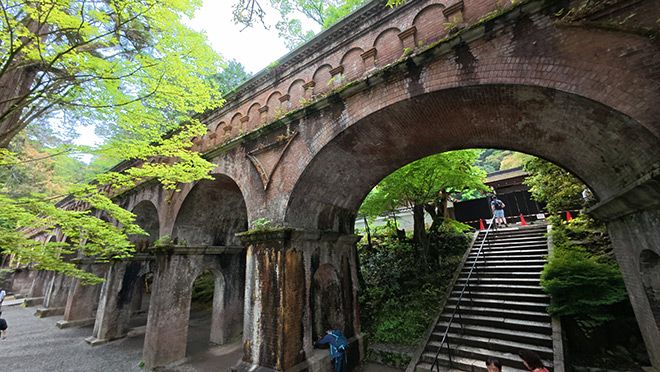The gentle murmur of flowing water accompanied me throughout the journey.
From the lakeside city of Otsu to Kyoto, I walked a roughly 12-kilometer stretch of the Biwako Sosui—a historic manmade waterway that links Lake Biwako in Shiga Prefecture to the ancient capital and an engineering marvel soon to be designated a national treasure.
Construction of the Biwako Sosui, also known as the Lake Biwa Canal, began in 1885, the 18th year of the Meiji Era (1868–1912). The ambitious project aimed to channel water from Japan’s largest lake to Kyoto, providing both a steady water supply and a means of waterborne transport for goods and passengers.
It was envisioned as a lifeline to rejuvenate a city that had fallen into decline following the relocation of the imperial capital to Tokyo at the start of the era.
The current, mirroring green leaves on its surface, flowed more swiftly than expected. Strands of algae drifted and bobbed as the water coursed through the carved channel, disappearing into tunnel after tunnel.
That such a vast feat of civil engineering was accomplished without the aid of modern machinery is nothing short of astonishing.
Beyond Yamashina, a district in southeastern Kyoto, I reached Nanzenji, a venerable Zen Buddhist temple. There, within the temple grounds, a majestic brick aqueduct—its Roman-style arches soaring boldly overhead—stood as one of the canal project’s most striking sights.
One can’t help but wonder—did Yukichi Fukuzawa (1835–1901), the renowned Meiji Era educator and writer, once gaze upon this very scene? During a visit to Kyoto, he penned an editorial in his newspaper questioning the very canal whose completion we now admire.
Fukuzawa argued that instead of becoming enamored with Western civilization and pouring vast sums into such a project, Kyoto should focus on preserving its ancient temples and shrines and natural beauty.
If that heritage were lost, he warned, “Who would come to behold Kyoto?” Even a visionary like Fukuzawa could not have predicted the enduring popularity of the canal today.
The weathered red-brick structure, blending Japanese and Western styles, now creates a striking and atmospheric space, alive with the presence of tourists.
“A singular ‘fuchi’—the elegance, charm, and distinct character of a landscape—in Kyoto in which nature and artifice, tradition and modernity intertwine”—such was the Council for Cultural Affairs’ rationale in recommending the canal for designation as a national treasure.
Scattered along the canal are “hengaku” (calligraphic plaques traditionally displayed in prominent locations on buildings and structures) and discovering them is one of the walk’s quiet pleasures.
One bore the inscription “Yukan Kiso”(“grand scenery, extraordinary idea”), written by the then-governor of Kyoto who first proposed the project.
And indeed, it was a kiso—a bold, unconventional vision that defied prevailing norms and has since become a cherished legacy of the region.
—The Asahi Shimbun, June 8
* * *
Vox Populi, Vox Dei is a popular daily column that takes up a wide range of topics, including culture, arts and social trends and developments. Written by veteran Asahi Shimbun writers, the column provides useful perspectives on and insights into contemporary Japan and its culture.


AloJapan.com